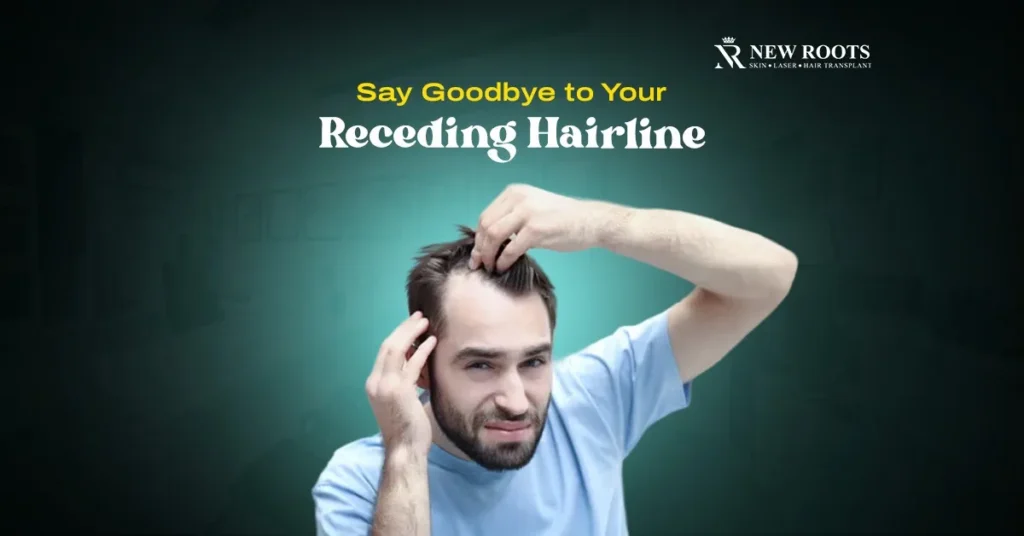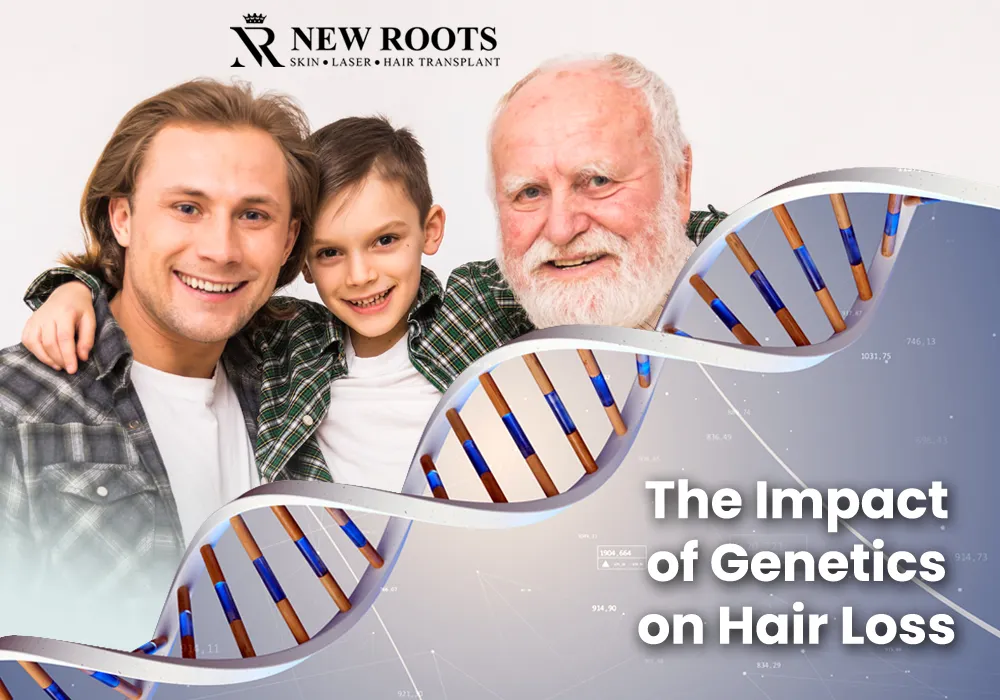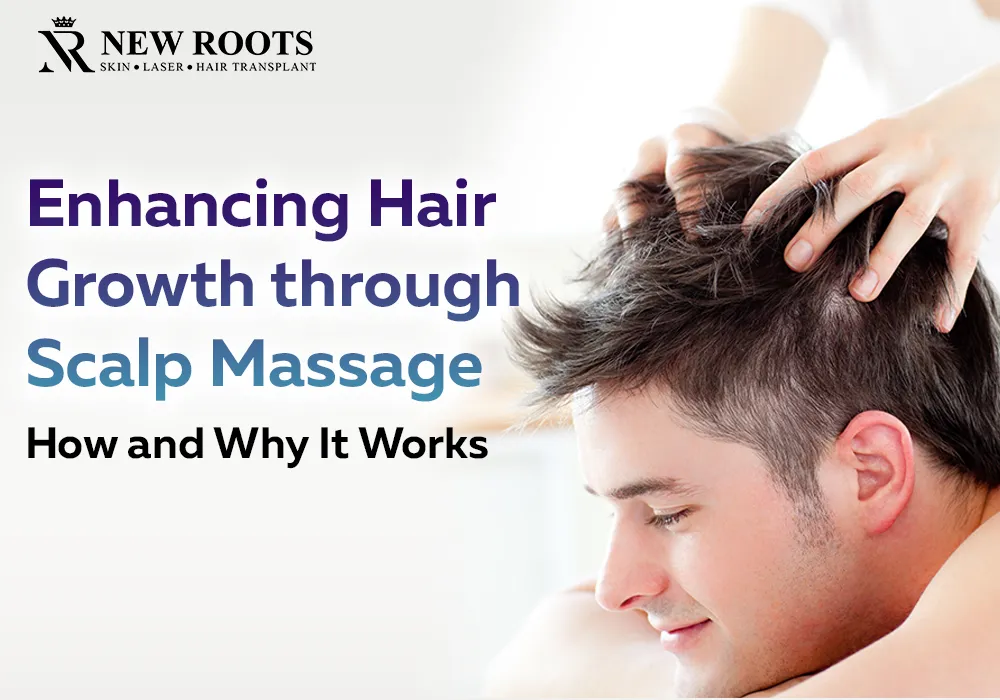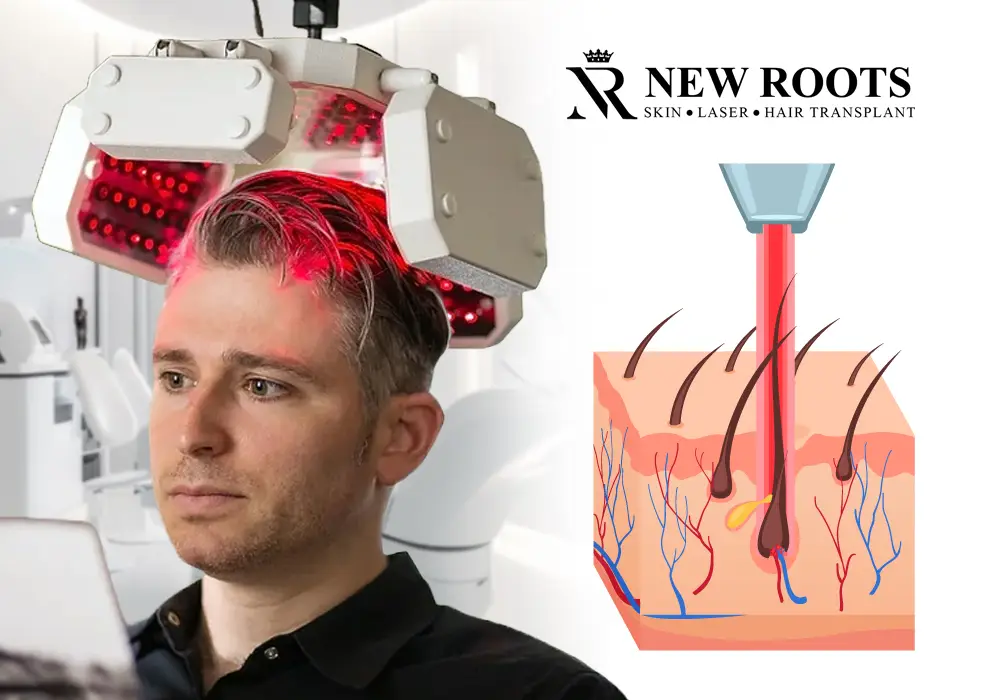Introduction:
Male and female pattern baldness is a challenge for many people, and a receding hairline can be very heartbreaking. Knowledge of the best way to treat a receding hairline is very important.
If you’re wondering how to cure a receding hairline, this comprehensive guide is here to help.
Get ready to acquaint yourself with various significant causes and practical advice, along with home and medical remedies, in this full guide for how to cure a receding hairline.
Table of Contents
First, let us discuss what is meant by a receding hairline.
Male pattern baldness is common, and such hair loss can occur due to genetic, hormonal, or unhealthy lifestyle factors. First, the cause is deferred to rectify the accurate option that makes the cure most suitable.
Causes
Some of the conditions that lead to receding hairline are attributed to multiple factors; that is, they may be caused by several factors. Below are the critical factors to consider:
Genetics: This indicates that there are strong hormonal patterns associated with a receding hairline.
While one of the family members, mainly the males, has a history of hair loss, one is most likely to encounter similar hair loss patterns.
This is commonly referred to as androgenetic alopecia, which is the main reason for hair loss among both sexes.
Hormonal Imbalances: associated with hormones, androgen imbalance is especially vital for hair growth and is influenced by genetic factors.
For men, there are varieties of androgens called dihydrotestosterone, which is a byproduct of testosterone and is well-documented to cause hair loss and receding hairline.
Age: Another independent variable is age, as hair growth increases with age. Biological aging causes the hair follicle to slow its production and become less efficient over time as people age.
On average, over 50% of men aged 50 and above experience some form of hair loss. This statistic also shows the degree to which the problem escalates with age.
This is because the hair growth cycle slows down as individuals age, resulting in less high-quality hair being produced over time.
Lifestyle Choices: Habits also play a role in this because one’s lifestyle can impact hair in one way or another.
Habits that directly affect hair can cause hair loss, including improper dieting, stress, smoking, and poor hair care.
For example, a nutrient-poor diet weakens the hair roots, and stress causes diseases such as telogen effluvium, which is when more hairs enter the shedding phase than normally required.
Age and Genetics
Unlike other factors, age has a unique way of contributing to this condition, mostly because hairlines recede the older one becomes genetically. This means that for many people, genetic forces may predetermine when and to what extent they would have to suffer through hair loss.
Statistical Insights: It has been found that about 50 percent of men go through some form of hair shedding before they reach the age of 50, and this number is suggested to rise further as men age.
It has been observed that about 80 percent of men by the age of 70 may suffer from hair loss that could be easily diagnosed by a physician.
A progression of hair loss based on age makes it possible to predict a certain pattern in a population of androgenetic alopecia.
Familial History and Predictability: The history of the family is a major factor in practicing hair loss because the traits of the pattern of baldness in the individuals in question can be different.
For example, by observing the patterns of hair loss in one’s father or grandfather, one can get some idea of what will happen in the future.
This genetic relationship is related to the traditional advice of having to check one’s family history whenever determining the likelihood of having a receding hairline.
The receding hairline needs to involve the genetic, aging, and lifestyle factors in order to promote recognition and reception towards the available, suitable treatment regimens.
Understanding the Effects Caused by the Receding Hairline
Emotional Distress
Apart from all that, a receding hairline is psychologically related to several mental disorders. Such changes cause anxiety and loss of self-esteem; hence, the need to come up with effective treatment solutions.
Guidelines on Measuring the Steps to Take in Treating the Receding Hairline
The following measures can be taken to treat the specific case of receding hairline.
Lifestyle Modifications: Stress management, sleeping well, and eating a balanced diet could also be factors that can improve the health of hair.
Hair Care Regimen: Changing to mild hair products ensures no more hair damage and improved hair follicles.
How to Cure a Receding Hairline with Home Remedies and Herbal Treatment
Essential Oils
Adding essential oils, such as rosemary and peppermint, to hair care products might improve hair growth. These oils improve blood circulation by stimulating the hair follicles; hence, hair growth is enhanced.
Scalp Massage
This suggests that frequent scalp massages contribute positively to the blood circulation of the hair follicles and, therefore, may help prevent further hair loss. It is essential to allocate at least a few minutes each day to this particular practice.
Balanced Diet
One key factor in achieving healthy hair is a proper and balanced diet, which includes vitamins and minerals essential for hair maintenance. They should thus avoid foods that are low in antioxidants, protein, and omega-3 fatty acids, as such foods can contribute to the onset of hair loss.
Managing Stress
Hormonal changes, both due to other factors and chronic stress, have been associated with hair loss. Stress-reducing activities, including meditation and performing yoga exercises, can reduce the level of stress exerted on hair, thus helping hair health.
How to Cure a Receding Hairline by Adapting Hair Styles and Care Products For
Changing Shampoo
There is a range of shampoos that one can use, but the one typically used can significantly impact hair health. For that reason, whenever washing your hair, try to use sulfate-free or gentle shampoos that don’t strip the scalp’s natural oils.
Suitable Hairstyles
Her preventive strategies that are also likely to have positive impacts include opting for hairstyles that are not sensitive to a receding hairline; those that are blended vary in length and often overcome thinning areas.
Medical Treatment of Receding Hairline
In cases where basic herbal remedies are ineffective, medical treatments may be the only option available.
Finasteride
Propecia is the brand name of finasteride, which has been approved to treat male pattern baldness and is known to prevent further hair loss and stimulate growth in a man’s scalp by reducing the buildup of DHT in a man’s system.
Minoxidil
Minoxidil is one such hair regrowth solution that is easily available and promotes hair growth by widening small blood vessels within hair follicles. Contraindicated during pregnancy and breastfeeding, and although not very popular, research has shown it can be effective when taken routinely.
PRP Therapy
In PRP therapy, a person’s blood is first drawn, separated, and then injected into the scalp to promote hair growth. This remedy has captured the attention of diverse individuals due to its remarkable outcomes.
Low-Level Light Therapy
Laser light therapy operates at low energy outputs to stimulate hair follicles and is used for the rejuvenation of balding areas. This treatment method is particularly helpful for both men and women experiencing baldness.
Hair Transplant
For those seeking a long-term solution, the next option is hair transplants, which involve transplanting hair follicles from one part of the body to another where hair is thinning. This procedure is complex and should be performed with the guidance of a specialist.
The study’s findings showed high levels of effectiveness for the described policies, and the paper also contains recommendations.
It is essential to note that the treatment outcomes for a receding hairline depend on the client and other aspects of their life, as well as several factors. Here’s a detailed explanation of this sentence:
Trends of Differences: Variability in Treatment Effectiveness
Individual Variation: This is sometimes true because everyone is unique in how they respond to treatments, which can alter the results.
All these factors can contribute to the effectiveness of a particular treatment, where genetic factors, hormonal balance, as well as the causes of hair loss, such as androgenetic alopecia, alopecia areata, or stress-induced hair loss, all play a role in determining the effectiveness of a treatment.
For example, a specific treatment may be successful in one subject but unsuccessful in another due to these differences in physiology.
Severity and Duration of Hair Loss: One type of treatment can be effective in one stage of hair loss, while it may be ineffective in another stage.
Patients in stage one of hair loss may also appreciate treatment more than those with extensive thinning or baldness.
Interference with hair growth is usually possible when the hair follicles are not fully miniaturized. Therefore, treatments such as minoxidil or finasteride, if commenced at an early stage, are most effective.
Underlying Medical Conditions: There are many diseases that cause hair loss: thyroid diseases, anemia, and other hormonal disorders. Such factors have to be solved if hair restoration treatments are to work. For instance, treating the thyroid problem may result in better hair growth.
The Concept of Having Many Choices
Proactive Approach: It is also important to consider because it provides persons with an opportunity to weigh various approaches that may be helpful in their circumstances. Common treatment methods include:
Topical Treatments: Examples include minoxidil, which affects the hair follicles and blood vessels by stimulating the follicles.
Oral medications: This condition can be managed with finasteride, a prescription medication used to treat hormonal causes.
Experimental Therapies: Platelet-rich plasma therapy, commonly referred to as PRP therapy, and low-level light therapy, or LLLT, are also gaining popularity for their potential benefits.
Surgical Options: Others are more permanent, such as hair transplant procedures.
Combination Therapies: It is quite normal to get better outcomes when two or many treatment procedures are employed rather than merely one procedure.
For example, a particular patient may apply topical therapy such as minoxidil along with systemic therapy, for example, finasteride. Besides, patient education concerning diet and relaxation can also be effective regarding hair loss treatment.
Advice from Other Healthcare Workers
Expert Guidance: Referral to healthcare practitioners, specifically dermatologists or trichologists, is important in order to come up with a specific plan that will suit the client.
Hair loss experts and growers can also perform a proper assessment of the type of hair loss a professional is experiencing, prescribe the most effective hair loss treatments based on available scientific research evidence, and track treatment outcomes.
Safety Measures
It is also important to consider different treatment options for hairline recession and not neglect safety concerns. Specific remedies may cause complications, and other practices, such as hair transplantations, always have some repercussions.
Conclusion
Learning how to cure a receding hairline involves a combination of folk remedies, lifestyle changes, and medication.
Everyone’s experience will be unique, but using a combination of these approaches will likely lead to healthier hair.
The earliest possible intervention is crucial for the best management of hair loss, resulting in increased self-esteem and quality of life.
Q&A ASK
The reasons that most people associate with a receding hairline are heredity, hormonal changes, the natural aging process, and existing habits. Such illnesses as androgenetic alopecia can, for this reason, be effortlessly determined, and regular factors such as stress, poor diet, and certain diseases can augment hair loss.
Some natural remedies are helpful in promoting hair regrowth because they enhance the health of the scalp. Some of them are essential oils such as rosemary and peppermint, routine scalp massages, proper nutrition, and stress control. However, these outcomes are not always as expected and are very likely not to be fully optimized in general.
Scientific answers consist of finasteride, minoxidil, PRP therapy, and coffee-degree laser therapy. The following can also be used to solve this issue and, in return, promote hair growth as well as slow hair loss levels. It is therefore important to seek consultation from a health practitioner on which treatment suits an individual best.
Nutrients, minerals, and proteins are, however, vital for hair fitness when taken in balanced diets. Biotin, zinc, and omega-3 fatty acids are essential vitamins that can help increase hair growth and strengthen hair follicles to minimize the effects of a receding hairline.
Yes, it is wise to consult one healthcare specialist. They can distinguish what is causing hair loss, prescribe what treatments are most suitable for the circumstances, and check the treatment outcomes. Consulting a professional is important in the development of sound strategies on how best to manage such a condition, with the possibility of reversing it.










